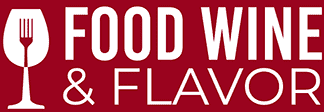Location, Climate, and Terroir
Anjou is located in the western part of the Loire Valley, not far from the historic city of Angers. It stretches along the Loire River, which plays a crucial role in shaping its climate and terroir. The river moderates the temperatures, creating a relatively mild climate that’s ideal for growing grapes.
The climate here is a mix of maritime and continental influences. Summers are warm but not scorching, while winters are mild, thanks to the Atlantic Ocean’s proximity. Rainfall is evenly distributed throughout the year, which helps maintain healthy vineyards.
When it comes to terroir,The terroir of the Anjou-Saumur wine region is also quite diverse, with a wide range of soil types and microclimates. The vineyards are situated on hillsides and plateaus, with varying degrees of exposure to the sun. The soils in the region are also quite varied, ranging from clay and limestone to sand and gravel. These different soil types, combined with the region’s climate, allow for a diverse range of grape varieties to thrive.
The Anjou-Saumur wine region has a maritime climate, which is heavily influenced by the nearby Atlantic Ocean. The region experiences mild winters and warm summers, with plenty of rainfall throughout the year. The Loire River also plays a significant role in the region’s climate, helping to regulate temperatures and humidity levels. These conditions make the Anjou-Saumur wine region an ideal place for growing a variety of grape varieties.
Grape Varietals:
The Anjou wine region is home to an impressive array of grape varietals, each contributing to its unique wine portfolio. Here are some of the key players:
- Chenin Blanc: The star of Anjou, this versatile white grape is used to make everything from bone-dry whites to sweet dessert wines and even sparkling wines.
- Cabernet Franc: This red grape thrives in Anjou’s cooler climate, producing elegant reds with flavors of red berries, herbs, and sometimes a hint of pepper.
- Grolleau: Often used in rosé production, Grolleau offers a light, fruity profile that’s perfect for summer sipping.
- Chardonnay: While less common, this grape is occasionally blended with Chenin Blanc for certain sparkling wines.
- Cabernet Sauvignon: Typically blended with Cabernet Franc, this grape adds structure and depth to Anjou’s red wines.
Styles of Wine
Anjou’s winemakers pride themselves on their ability to produce a diverse range of wine styles. Here’s what you can expect:
Dry Whites (Anjou Blanc)
Chenin Blanc dominates here, delivering crisp, mineral-driven wines with flavors of green apple, quince, and honey. These wines pair beautifully with seafood, goat cheese, and light vegetarian dishes.
Sweet Whites (Coteaux du Layon)
The Coteaux du Layon appellation is famous for its luscious sweet wines made from late-harvest Chenin Blanc grapes. These wines often have notes of apricot, honey, and candied citrus, balanced by refreshing acidity. Perfect for pairing with desserts or blue cheese.
Rosés (Rosé d’Anjou and Cabernet d’Anjou)
Anjou is renowned for its rosé wines. Rosé d’Anjou is typically semi-dry and fruit-forward, while Cabernet d’Anjou is slightly sweeter with vibrant notes of red berries and floral undertones.
Red Wines (Anjou Rouge)
Cabernet Franc is the backbone of Anjou’s reds, which range from light and fruity to more structured and age-worthy. These wines are known for their elegance and food-friendliness.
Sparkling Wines (Crémant de Loire)
Made in the traditional method, Crémant de Loire is a sparkling wine that rivals Champagne in quality but is far more budget-friendly. Chenin Blanc usually takes center stage, but Chardonnay and Cabernet Franc are also used.
Unique Terminology
Every wine region has its lingo, and Anjou is no exception. Here are a few terms to familiarize yourself with:
- Botrytis Cinerea: Also known as “noble rot,” this fungus concentrates the sugars in Chenin Blanc grapes, leading to the production of Anjou’s famed sweet wines.
- Tuffeau: A soft, chalky limestone found throughout the Loire Valley. It’s not only an integral part of the terroir but also used to build the region’s iconic châteaux.
- Layon: This refers to the Layon River, a tributary of the Loire, which influences the microclimate of the Coteaux du Layon appellation. The river’s misty mornings encourage the development of noble rot.
Conclusion
The Anjou wine region is a paradise for wine lovers looking to explore the breadth and depth of Loire Valley wines. Its combination of diverse terroirs, a moderate climate, and a wide array of grape varieties results in an impressive portfolio of wines to suit every palate. Whether you’re sipping on a refreshing rosé, indulging in a luscious sweet white, or toasting with a sparkling Crémant de Loire, Anjou offers an unforgettable experience. Next time you’re shopping for wine or planning a trip to France, don’t overlook this charming and versatile region.
Related Posts
France: Champagne Wine Region – The Sparkling Jewel of France
France: The Loire – Amazing Wines for Absolutely Every Taste
Bordeaux: Left Bank – Native Home to Cabernet Sauvignon
Bordeaux: Right Bank – Native Home to Merlot
Bordeaux: Entre-Deux-Mers & Sauternes – Vibrant and Crisp vs Killer Lush White Wines
France: Burgundy – Beautifully Complex Wines that are Incredibly Easy to Adore
France: Beaujolais: A Light Red Wine Great for Picnics and Warm Weather Fare
Post Created: February 13, 2023




0 Comments